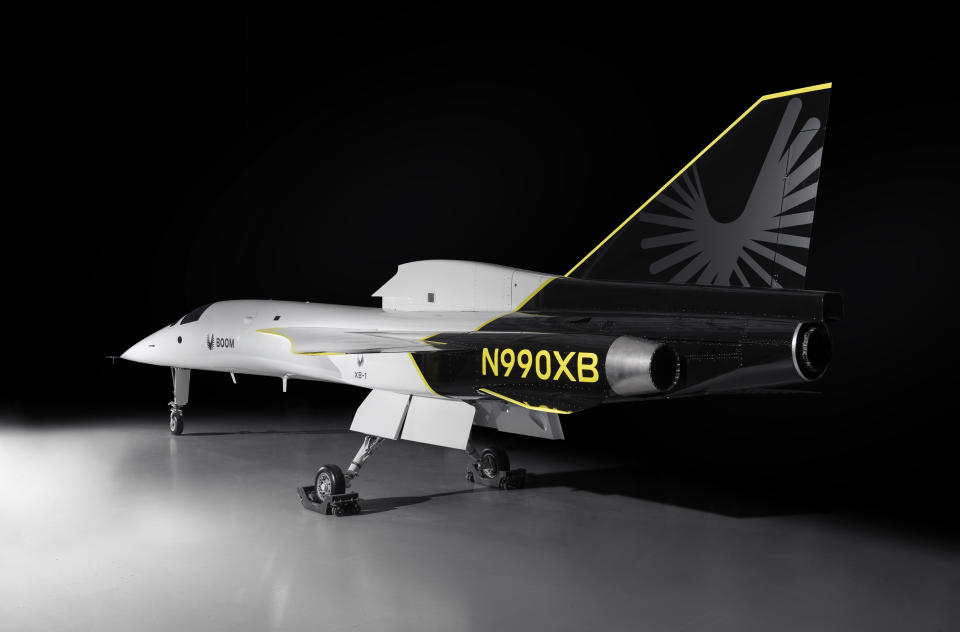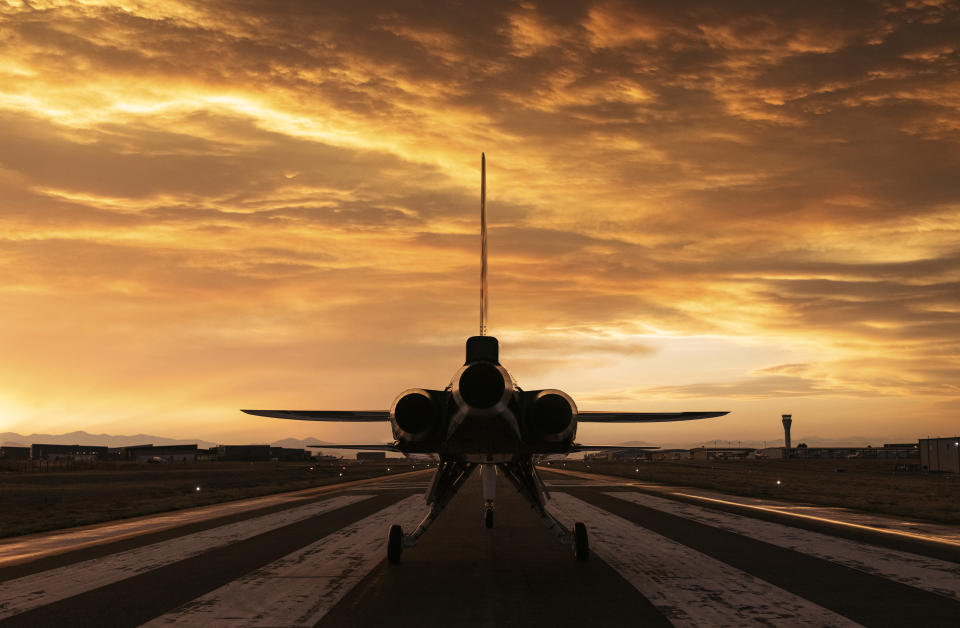Boom unveils the XB-1, its supersonic testbed
The craft is expected to start test flights in 2021.
The “Baby Boom” is finally here. After six years of development, Boom Supersonic is unveiling its XB-1 demonstrator. The craft is the company’s first supersonic plane, designed to prove the technology ahead of a full-size airliner, Overture. But today is all about seeing XB-1 in the flesh, or as close as you can given the current pandemic -- with a glitzy in-person launch scaled back to an online press conference.
As we reported on back in August, Boom is looking to build the first supersonic civilian airliner for half a century. The first step on that road is the construction of a demonstrator plane that can be used to test the various components and designs a supersonic airliner would need. Say hello to the single-seater XB-1, tail number N990XB.
The XB-1’s carbon-composite frame (for added heat-resistance) measures 71 feet long, with a delta wing shake that, the company says, has been optimized for maximum efficiency. It’s powered by a trio of General Electric J85-15 engines, rated to provide more than 12,000 pounds of thrust. The J85 is a warhorse engine that has been powering craft since the 1950s, including the supersonic T-38 Talon training plane. Boom says that the engine has been tweaked to improve its efficiency, important given the company’s focus on a carbon-neutral test program.

Boom has looked to lean on new manufacturing methods to reduce costs and dramatically shrink its production time. It leaned heavily on 3D-printing, both for prototyping and to make parts for the XB-1 itself. Boom worked with both Stratasys and Velo 3D to produce prototypes, parts and tooling for the process and the craft itself. Mike Jageman, manufacturing head, said that several parts were built this way “right here, in the hangar.”
One other big technical innovation involves abandoning one of Concorde’s most famous features, its drooping nose. Rather than employ a system like that, XB-1 uses a high-resolution video camera in the nose to help pilots navigate the tricky landing. The company says that the result is to offer a “virtual window through the nose,” although we’ll have to wait for testing to see if that’s a fair claim.

Naturally, the real work begins now, ensuring that XB-1 is ready to begin test flights in the Mojave Desert next year, everything-else-going-on permitting. As founder Blake Scholl says, XB-1 is “an important milestone towards the development of our commercial liner, Overture.” The company expects the first manufacturing facility to be built by 2022, and the first Overture to be completed by 2025. It’s a very ambitious goal, especially given that the company hopes to have the first passenger flight in the air by 2029.

 Yahoo Finance
Yahoo Finance 